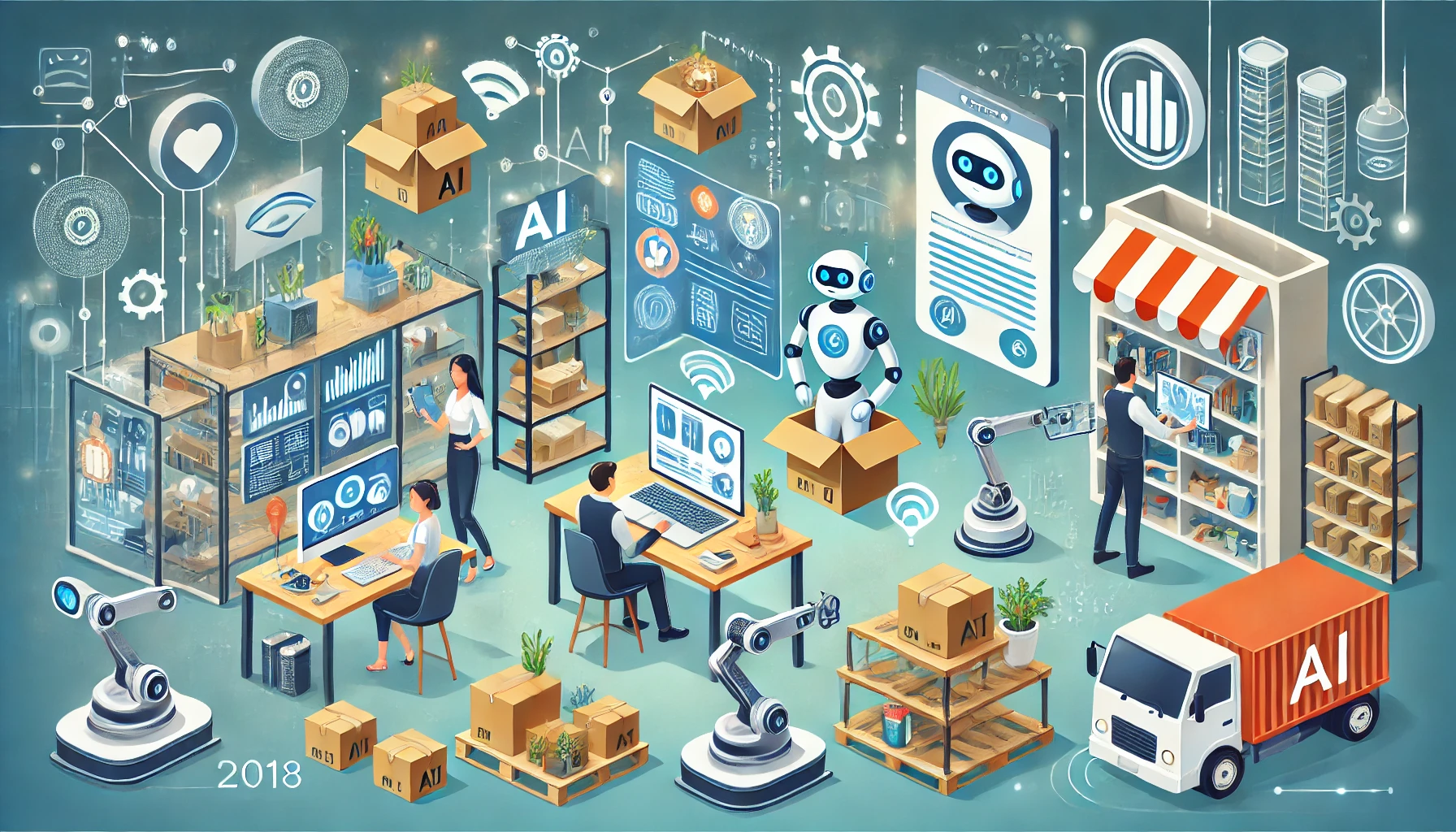In the competitive world of small businesses, staying ahead often means adopting innovative solutions to streamline operations, reduce costs, and improve customer experience. Artificial Intelligence (AI) and automation offer powerful tools to achieve these goals, helping small businesses operate like much larger enterprises without the overhead. This article explores how small businesses can effectively leverage AI and automation to enhance efficiency, productivity, and growth.
Understanding AI and Automation in Small Businesses
Artificial Intelligence (AI): Refers to machines or systems designed to perform tasks that typically require human intelligence, such as learning, reasoning, and problem-solving.
Automation: The use of technology to execute tasks with minimal human intervention. Automation can be simple, like scheduling emails, or complex, like robotic process automation (RPA) for handling repetitive business operations.
Together, AI and automation can revolutionize small business operations by performing tasks faster, reducing errors, and freeing up human resources for higher-value activities.
Benefits of AI and Automation for Small Businesses
Increased Productivity: Automation eliminates repetitive, time-consuming tasks, enabling employees to focus on strategic initiatives.
Cost Efficiency: Automating routine tasks reduces labor costs and minimizes errors that could lead to financial losses.
Enhanced Customer Experience: AI-powered tools like chatbots provide instant customer support, improving satisfaction and loyalty.
Scalability: Small businesses can handle increasing workloads without proportionally increasing costs or hiring more staff.
Data-Driven Insights: AI analyzes vast amounts of data to provide actionable insights, enabling smarter decision-making.
Key Areas to Leverage AI and Automation
1. Customer Service
- AI Chatbots: Use AI-driven chatbots to handle FAQs, provide product recommendations, and resolve common issues 24/7.
- Sentiment Analysis: AI tools can analyze customer reviews and feedback to understand customer sentiment and improve services.
2. Marketing and Sales
- Automated Email Campaigns: Tools like Mailchimp and HubSpot help create personalized, automated email campaigns.
- Lead Scoring: AI analyzes leads to prioritize high-value prospects, increasing conversion rates.
- Social Media Management: Platforms like Hootsuite automate posting and engagement, ensuring a consistent online presence.
3. Inventory Management
- Predictive Analytics: AI predicts demand trends, helping businesses maintain optimal inventory levels.
- Automated Restocking: Automation tools can monitor stock levels and place orders automatically when inventory runs low.
4. Accounting and Finance
- Expense Tracking: Tools like QuickBooks or Xero automate bookkeeping, invoicing, and tax calculations.
- Fraud Detection: AI can identify unusual transactions or patterns, protecting small businesses from fraud.
5. Human Resources
- Recruitment Automation: Platforms like LinkedIn Talent Insights use AI to identify and engage top candidates.
- Employee Onboarding: Automate the onboarding process with digital workflows and training materials.
- Performance Analytics: AI tools provide insights into employee performance, aiding in better workforce management.
6. Operations and Workflow Management
- Project Management Tools: Automation platforms like Asana and Trello streamline task assignments and tracking.
- Robotic Process Automation (RPA): RPA tools can handle repetitive tasks like data entry or report generation.
Steps to Implement AI and Automation in Small Businesses
- Identify Pain Points: Start by analyzing your current operations to identify repetitive tasks or areas where efficiency is lacking.
- Set Clear Goals: Determine what you want to achieve with AI and automation, such as reducing costs, improving customer service, or enhancing productivity. Choose the Right Tools
Identify tools tailored to your business needs. For example:
- Zapier: Connect and automate various apps.
- ChatGPT: Enhance customer interactions.
- Monday.com: Streamline workflow automation.
Start Small
Initiate with a single process or department to test and measure the effectiveness of your selected tools.
Train Your Team
Ensure your staff understands how to use AI and automation tools effectively. Provide training and resources to boost their confidence.
Monitor and Optimize
Regularly monitor the impact of AI and automation on your business. Use metrics such as time savings, cost reduction, and customer satisfaction to evaluate success.
Challenges in Adopting AI and Automation
Initial Costs
High upfront investment in AI and automation tools can be a hurdle for small businesses with limited budgets.
Learning Curve
Employees may need time and training to adapt to new technologies.
Data Privacy Concerns
Storing and processing customer data with AI tools must comply with privacy regulations like GDPR or CCPA.
Customization Needs
Off-the-shelf solutions may not fully address unique business needs, requiring additional investment in customization.
Real-World Examples of AI and Automation in Small Businesses
E-commerce Stores
Online retailers leverage AI to provide personalized shopping experiences, recommend products, and optimize pricing strategies.
Local Restaurants
Restaurants use AI-powered reservation systems and automated marketing to manage customer bookings and engagement.
Freelance Agencies
Freelance agencies streamline project management and invoicing through automation tools, enabling them to handle multiple clients efficiently.
Small Clinics
Healthcare providers automate appointment scheduling and patient reminders, reducing no-shows and improving patient care.
The Future of AI and Automation in Small Businesses
The potential for AI and automation in small businesses is vast. Emerging technologies are making these tools more accessible and affordable. Innovations like machine learning, natural language processing, and AI-driven analytics will further enhance efficiency and customer experience. Additionally, as automation tools seamlessly integrate with cloud computing and IoT, businesses can unlock new opportunities for growth and scalability.
Conclusion
AI and automation are no longer luxuries reserved for large enterprises; they are indispensable tools for small businesses aiming to thrive in a competitive landscape. By identifying key areas for improvement, selecting the right tools, and continuously optimizing processes, small businesses can achieve remarkable efficiency and growth. Adopting these technologies saves time and money and creates a more agile, customer-focused, and future-ready business.







Leave a Reply